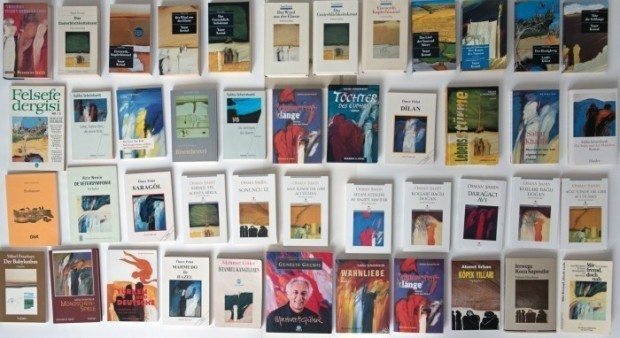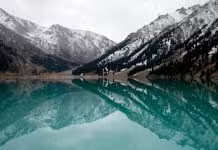The art critic Dirk Schwarze has listed important artists from the entire World in his last book “The ABC of the post war modern art” (Berlin Siebenhaar press). Mehmet Güler is the only Turkish in this list of 100 named artists. At his atelier in Kassel, Germany I talked with Mehmet Güler about his art and being an artist.
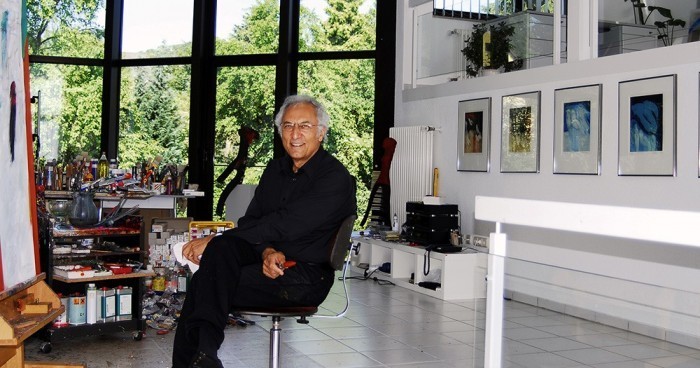
Interview: Turkish painter Mehmet Güler
A paintbrush, made of squirrel fur
How and when did you start painting? Who discovered your talent?
We can not really talk about “discovering a talent” at the time when I was a child. I was born in a village called Söğüt in Malatya/Turkey in 1944. Those days there was not even a primary school in our village. My father had learned reading and writing at his military service. So, nobody would have known about art or painting. I was one of the first students of the primary school in our village and again first one who left the village to study further.
As a child I instinctively pictured some figures. Then I met the primary school books with colored pictures. Those simply colored drawings on those yellow poor papers amazed me. I asked my teacher, İlyas Yıldız, how to make a color picture, then he explained me what a watercolor was: How to make painting colors from pigments and how to draw pictures with the brush. As he mentioned a “brush”, the first thing I could recall was the whisk broom that we used to brush our cloths. Then the teacher drew a paint brush on the blackboard and showed the parts: a wooden handle and metal edge with hair. I drew the same on my notebook as I definitely wanted to have one. I had always painted with pencil or coal before.
My grandpa was a merchant and used to go to big cities to buy stuff. I first wanted to order him a watercolor but he said he was not traveling in the next days. However I wanted to have it immediately and decided to make my own colors.
In our village we used use color pigments to paint the wool and they were sold at the neighbor village. I went to that village after the school and bought all colors pigments, 50 gr. each. I mixed them in the water and made paste. Then I had to make a brush, which in the beginning looked quite easy to me: A handle from wood and a tin plate that holds the hair. My teacher did not tell me what kind of hair, then I used goat hair. I was pretty excited.
Then I started to paint. It was really difficult to use that brush since it was curled up in the water. Well, I somehow finished my picture and let it dry. The colors came off as soon as they dried out, because I had put them to tick like gouache. I was quite upset but did not give up.
Next school day I took my picture and the brush to my teacher. He said; he had once read that the brush should be made of an animal called “weasel” but he had not seen that animal before. That still gave me an idea: I went home, my father was not there but his rifle was hanging on the wall. I was 12 and had used rifle before. I took the rifle and some cartridge and went to the riverside, where there were many walnut trees and squirrels on them. The “weasel” I was looking for should have been there. I came back home with a big tail squirrel in the hand and made my brushes. Then, I got all my painting equipment ready.
Vegans would be angry to you about that.
We did not know such thing like “vegan” at that time there. Having proper painting stuff was a desire that I could not resist. When I targeted the animal, I saw its eyes and could not shoot first. But my desire overrode and I shot it. But afterwards I promised myself not to kill any living creatures, and I took my promise.
Well, after primary school I went to teaching school, where I first time took “painting lessons”. I would not call it “art lesson”, since at that time we did not know what art was. The picture that my painting teacher Tayyip Yilmaz made were amazing me. He should have noticed how curious and enthusiastic I was about painting, he gave me the keys for the workshop and the material room. I also got unlimited permission to use those rooms and the material. I was studying for being primary school teacher at that time, but after that I changed my plans to be a art teacher, which required me to get a higher education. I planed my next six years according to my new plan.
 In order to be a good artist
In order to be a good artist
What you told me until now is enough to write an story actually: Who has limited facilities is stronger in creating things and finding out solutions. This is quite difficult nowadays.
We can create opportunities even under the narrow circumstances. Nowadays kids get everything ready. Kids in our village did not have any ready toy at all. We also did not need a toy, we created them ourselves; rings from metal wires or figures from mud. Today kids have more then what they need. Plus there are internet, smartphones and computers which make their creativity dull.
Well, what do you think more important; talent or education.
Both is necessary. Only one of them does not make somebody a real artist. A raw material has no value before it is formed. Diamond is a stone but gets valuable when it is treated. This is quite important I think. A talented and enthusiastic kid can be a real artist, only when he/she is in the right hands. However, I also think that the art education is not given correctly in many places in the World. On the other hand, the kid should also has passion and make an effort. You can not force a young person to be an artist.
Is this what we call talent?
No. Passion can make the talent to reach the success. And discipline is also a must. Without a hard and well-disciplined work, an achievement is hardly possible.
A Turkish artist in Europa
You have been living in Germany for almost 40 years. How are you recognized here? As Turkish painter or?
Sure, I am Turkish and a Turkish artist. This is the fact. But there is not such thing “Turkish artist”. Artist is artist, no matter where he is coming from. Yet, it is the case when he or she brings something from his/her culture in to the art piece. But I have to also say that; being an Turkish artist is an disadvantage in Germany. At my first exhibitions here, the Germans were convinced that my success come only from my German education. They used to ask me how many art academy or museums there were in Turkey. Indeed, at the beginning of 70s there were only a few art institutions in Turkey. Also very little interest in art. Then this prejudice is understandable. In the city we are living, Kassel, there are 14 museums. How many in Turkey? A couple new museums were opened up recently in Istanbul but they hardly have an art piece, that is worldwide recognized .
As I always say; If I were an American or West-European artist, I could have been acknowledged as an artist easier. In Germany people long time believed that only workers came from Turkey. I had to fight against that prejudice for years.
Can we see traces from Turkey or Turkish culture in your works?
Sure. Until middle 80s my subject was human-natur relationship at the country sides of Anatolia. Precisely; the life struggle of the Anatolian women. I later improved a different point of view as I got inspired by the conditions here in Europe. I started to observe the encounters of the two different cultures and their influences on each other.
Cultural encounters can change both sides. Receiving and giving, increasing tourism are able to change peoples views. Like a stone rolling in the riverbed and being reformed. When a conservative and pious man comes to Antalya to work in a hotel, he serves for the half-naked tourists. This might make him more tolerant and gentle. The tourists, who visit Turkey, might also improve new human relations, behaviors or eating habits. Well, this contact is not always in a positive way, tough.
Light colors or nudity in my paintings represent the free and easy Europeans, dark colors, on the other hand, conservative and rigid Anatolian people. Namely; Occident and Orient. These two are opposite to eachother; both in form and color.
There is not only a physical or spiritual meeting in my works but also historical. The artist and intellectuals from the past meet the modern ones and interact. I get inspired from those people and name my works, for example, “Me and Goethe” or “Me and Heine”.
We can then say that; art can overcome the prejudices. Who see your paintings might get curious to learn that culture or consider to visit Turkey.
I think so. Last year 17.000 visited my exhibition in Cappenberg Castle (Schloss Cappenberg) in 6 months, except the school visits. There were 650 at the opening. The exhibition was opened with a classical concert. In Germany the exhibitions last hardly 6 months but that one was extended one more month. It was also broadcasted in TV. So many people met a Turkish artist’s art and the reactions were quite good. A country can not make such publicity easily. Since this is a cultural event, not an advertisement.
What was that exhibition about?
The title was “Im Rausch der Farben“, which means “intoxicated by colors”. It was an retrospective exhibition; my works from 1969 to 2014.
The reactions from Germans to your art are quite positive. How about the Turks in Germany? How do they approach towards fine art?
I often meet the same question. 3 million Turkish people are living in Germany but there is a very little interest in art from this society. They are rather interested in making money then art, culture or aesthetics. In the big cities, like Berlin or Frankfurt, there is some interest but this is far beyond being sufficient for that many people.
All the art galleries are in İstanbul
What do you think about fine arts in Turkey?
Until middle 80s there was hardly any art event in Turkey. Art was not recognized, art galleries did not exit. Sure, it is a matter of offer and demand. An art gallery is run only when art is sold, which means as long as the art has a capital value somebody considers to open a gallery. Well, this situation started to change in the second half of the 80s. That was partly affected by Turkey’s improving international relations. Art gained value and interest and consequently art schools and galleries were established. However, like in industry sector, the focus is only on Istanbul; art events, festivals, biennial, auctions are often in Istanbul, the artists move to Istanbul. The common nation wide irregular improvement in Turkey is applied on art as well. You can find a big art gallery in a remote place of Germany. This is a regular improvement. Otherwise the cities meet unsolvable urbanization problems.
You are also well known in Turkey. How active are you in Turkey?
My first exhibition was in Ankara at the State Fine Art Gallery in 1970. The pieces were all woodcuts and at that time the exhibition attracted a big attention in Ankara. Since then I have been active in Turkey. I open at least an individual exhibition every year and participate the group exhibitions there. I think I am one of the well known artists in Turkey.
That I live in Germany is not a problem for my existence in Turkey. It is even an advantage now, actually. Here we are open to the World and have no handicaps. We can travel everywhere, open exhibitions anywhere we want. Furthermore we get inspirations from different cultures. These are precious for an artist.
Turkey gets gradually more conservative
It seems like the growing conservatism in Turkey influence the Turks in Germany, as well. What do you think about that? Does it also affect the fine arts?
As I said before, the interest of 3 million Germany located Turks in art is extremely little. I personally experienced this at my exhibitions. They also do not bother taking their kids to the museums for example. As an artist, I wish that our people, who live here for almost 60 years, could change some habits and show interest in art. I find pity that Turkish society becomes more and more conservative. They could have been rather open minded and modern people in Europe. This bad influence on Turks in Germany started in 70s, then it is no surprise where we are today. In Turkey the artist, somehow, can carry on their profession but they also experience disrespect from some groups. I wish in the 21. century art is more promoted and improved.
Are you affected by the political problems in Turkey? Should an artist be political?
No, politic has nothing to do with my art. I am not practicing political art. Yet, it is not right to do. When you mirror the daily events in your work, then your work might become “kitch”. For example; if I picture Nazım Hikmet’s poem, that says “if I am not burned, if you are not burned …”as his head is in the fire, then it is a “kitch“. That’s why those things are not my interest. I just try to go beyond in my art; not repeating myself but renewing. If you compare my old and new works, you can see the same style but no replication.
Abstract art
You rather work with abstract figures. However, abstract art is not always understood an beloved. Why abstract art?
We can not say that the good art should be figurative or abstract. Both can be good or bad. The important is that the artist is authentic and the art is not imitation. An artist should have his/her own style. That means that the art piece should be recognized without the signature of the artist.
I here like to tell about a memory: In 1984 I participated an art contest in Turkey, organized by Enka Holding. The works should have been without signature, but a nickname on the back side. As I prepared the frame in an empty room, a man around fifties entered in and saw my work. Then he asked me scornfully if I made it. I said “yes, but why”. He told me that I imitated Mehmet Güler. I asked then if he knew Mehmet Güler personally. He said; “No, but I know his art”. That was an interesting meeting. He could have recognized my style without knowing me. That is important in art.
Well, back to abstract art: The pieces I made in 70s were figurative like photographs. But if an artist does the same thing for 40 years, we can not talk about an improvement. That means he/she can not produce new ideas. Then he only produces but can not create. This may either mean that he/she has no more creativity or wants to sell his/her popular piece by reproducing it. This means that the artist is at the end. You can see lots of example in the history. None of the good artist painted the same way for 20-30 years.
My works at my first exhibitions in 70s were quite figurative and they were sold before the opening. I could have continued the same way to make more money, but I did not. I already had my own style but my work was not satisfying me any more, because I wanted to go beyond. What you see as abstract figures in my works is actually the improvement since then. The figures become abstract in time. They are actually based on figures but in time they turned to be a stain, form or color. Although they are abstract, they are the essential figures of my picture. My hand style is still the same for 40 years. I think the right improvement in paintings should be from figurative to abstract.
But to understand a abstract art requires a cultural background, right?
Sure. The eyes that watch a art piece should have been educated. This education can be either by an art study or by reading books or catalogs and visiting museums. I have an interesting experience about that, too: I had a visitor at my atelier once, he looked through all the pieces and stood in front of a particular one and said “I want this.” That piece was my favorite as well. After a short conversation with him I learned that he read a lot of art books and visited often museums.
But we can not expect that everybody has the same aesthetic sense.
Off course we can not. Another experience from 70s: Those days I was dealing with water image in my paintings. I used to give a turquoise color to the water, which is the source of living in Anatolia. That color tone used to be called “Güler Blue” in Germany. A German visitor who saw a water image on my picture told me that he thought it was the sky, seen through a hole in the nature. I was really surprised that an adult cold see the water as an hole in the nature. Then I showed the same picture to my 3,5 year old son, Ergin. He said he saw water there. It is interesting; some people has not a vision like a 3-4 year old kid has.
 Art is for the artist
Art is for the artist
Well then. How would you answer that often asked question: Is art for the public or for the art itself?
None of them. Art is for the artist, I think. I paint for myself. A honest and real artist should create for his/her own sake. That the art piece is liked or paid is another thing. I had told in the beginning; as a kid, who did not know what art was, I drew figures on the walls with a piece of coal I took from the fireplace. I ha not intended to make art or approve something, it was an instinct. Painting is the same instinct to me today. I feel bad and unhappy when I am not able to paint. It is like breathing. My best moments are when I bring out a good work.
That means that you do not have a target audience.
That is right. I have never painted on the order, I would never do that. Depends on my mood, I sometimes paint small sizes. but when I have a big enthusiasm, then I paint on a 5 meter canvas. Whatever my mood demands at that time. It is like you eat with a big apatite when you are too hungry.
Self discipline is a must
How do you work? How often and when?
An artist has no fixed time to get up or to work. I am more than happy that I can decide my own time, spend my day as I wish. If it is muggy outside, I am, off course, not excited to paint. But when it is a nice and shiny weather, I feel like painting. Beside the daily life, the family problems can also affect my working. This is an act of creating not producing, and the mood of an artist has a lot to do with his/her creativity.
But, after all I always have worked with discipline. I wake up between 6 and 7 every morning and sleep around 11-12 and try to use this time in a most efficient way. At the end of the day I make an account, how much time I utilized. Time is flowing, you can not bring it back.
However, it is often thought that the artist drink whiskey at the bars until morning and paint in the afternoon. It is also a prejudice, I guess.
Yes, but there are such artists, too. I have never been so. I hardly been to those men coffee places. I have not played cards, for example.
You have been doing the same profession for 40 yıldır. Have you realized everything you wanted to do?
40 years ago I had worked as art teacher at high school and at Gazi University in Ankara. But yes, I am only a painting artist in the last 40 years. I did not want to do anything else. It is not possible to be able to realize everything you want. An artist, who wants to create, would not stop as long as his/her health allows. This is how I think. I always have somethings in mind and I am happy as long as I have new ideas.
What else do you want to do?
Earlier I had worked oil color, woodcut, mixed technique, design and wooden sculptures. Now I make metal sculptures. They are like 2,2 meter high pieces. In 2005 I had wrote a book and it was published by Dünya Press. Now I prepare it in German.
What is its name? What is it about?
It is called: “A past in the sun”. It will be published under same name in German; “Vergangenheit in die Sonne“. What I told in this book is partly what we talked today. My story from my childhood until I leave Turkey. It is not only a life story. There are politics, culture and critics in it. It will be 500 pages with the pictures
A last question: What would you recommend to the young people who study to be an artist?
First of all; they should study at a good school. There are now many art faculties in Anatolia but many of them do not have good educators. Beside the environment is also important. They should live a place where there is a rich cultural environment. Schools in Anatolia, unfortunately, not lucky in that sense. They should also work hard and should not have great expectations. Otherwise they can get disappointed. as I always say: This is a road with full of stones. Expecting to be rich and famous in short time would be a mistake. One can never guarantee the success. Art requires discipline, hard work and devotion
Thank you very much Mehmet Güler.
Biography: Mehmet Güler
Mehmet Güler graduated from Gazi University Faculty of Fine Arts in 1965 and Kassel Fine Arts cademy in 1976. He held 180 worldwide individual exhibitions, participated many biennials, triennials and group exhibitions. He has been living in Kassel, known with its “documenta” festival, which is an exhibition of modern and contemporary art, takes place every five years. Mehmet Güler’s works are currently being exhibited in many museum and collections. He has 17 awards, among others “Golden Badge Honor Award of city Kassel” in 2014. We can meet his paintings also on the book covers, among others Yaşar Kemal’s book in German by Swiss Unionsverlag.

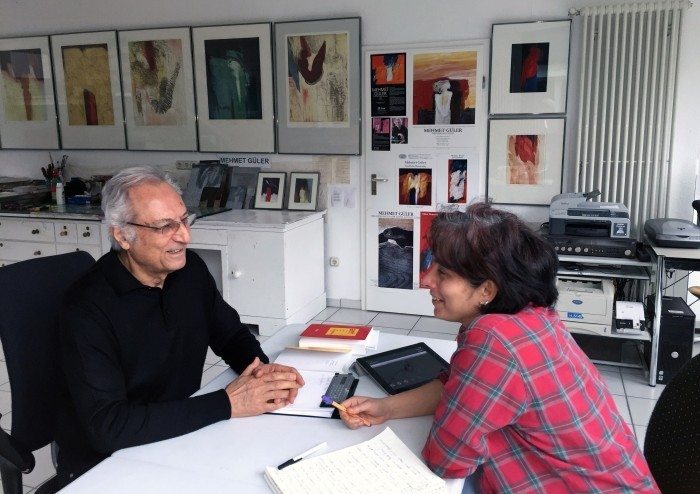
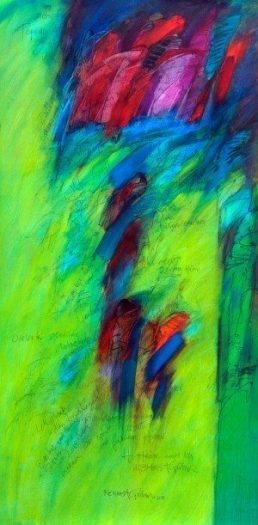 In order to be a good artist
In order to be a good artist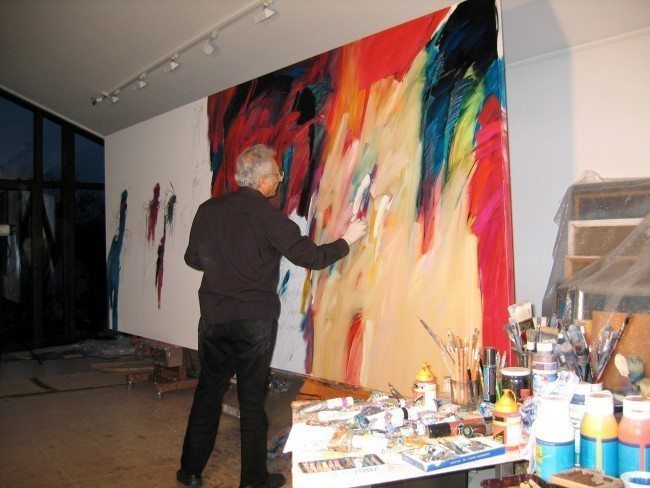
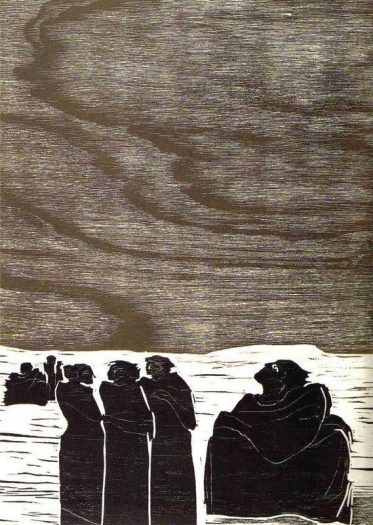
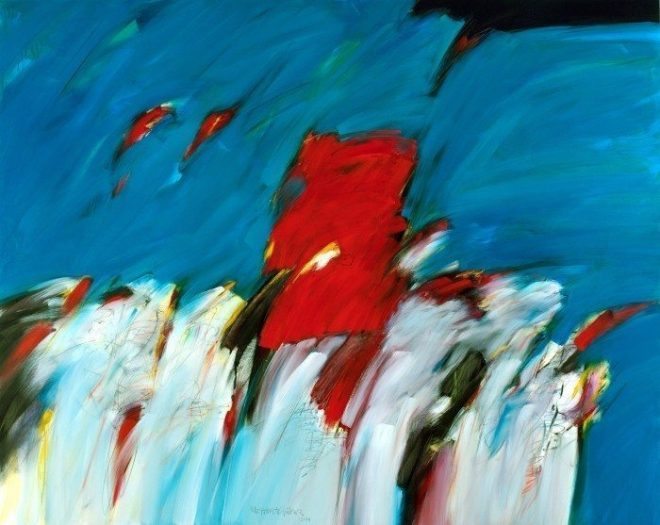
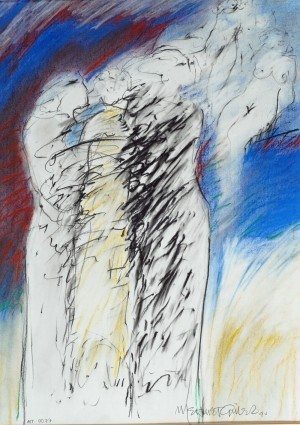 Art is for the artist
Art is for the artist